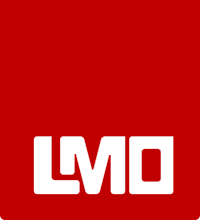The IT Asset Management (ITAM) function is the single point of accountability for the life-cycle management of IT Assets throughout your organisation. Furthermore, ITAM is responsible for the development and maintenance of policies, processes and systems that control the risks, costs and business performance objectives as established by the business.
As a logical framework and interface for identifying, controlling, maintaining, and verifying all managed IT Assets, it makes the perfect platform for managing your SAM objectives. In fact, if you read all ITAM product literature, they all highlight that the primary benefit of a well implemented ITAM system is the significant saving achieved relating to software spend.
Consequently, there is no doubt that ITAM does drive effective SAM, however, too often, ITAM projects lack focus on SAM and end up just becoming an IT tool used for identifying and managing hardware. To prevent this from happening, ITAM must ensure that objectives for managing software assets are clearly defined and understood by all those potentially affected. In addition, the policies, processes and procedures to ensure effective planning, operation and control of SAM need to be scheduled as a critical milestone on the implementation plan. If this is not done, your ITAM systems and processes will never deliver the SAM benefits you desire.
So, to make sure the implementation of your ITAM focuses and includes the bare minimum SAM requirements, check that these 5 key areas have been included in the planning and implementation stages:
Process Assessment:
Prior to implementing an ITAM system, it is important that you first understand your existing SAM processes and identify procedural gaps, dependencies and risks associated to acquiring software licenses and software deployment. Many organisations assume that by implementing an ITAM system it is going to miraculously drive effective management of the software life cycle. However, it is processes and people who drive this change in behaviour and not the technology. Make sure you have defined your SAM process requirements in advance of selecting an ITAM system, this will make sure that your requirements are incorporated in the planning, evaluation and deployment phases.
License Entitlements/Models:
Check that you have a clear understanding of your company’s license contracts. It is important that you know which license models you have subscribed to or purchased, as this will be the metric in which you will need to monitor and control SAM. If you fail to identify what needs to be measured, you run the risk of implementing an ITAM system that does not fully deliver all your requirements. A large percentage of organisations who fail to focus on this dependency, end up having to acquire additional systems to fill the gap. To avoid this outcome, make sure that you have identified all the required license models and confirm, during the evaluation of the ITAM system, these can be measured and controlled effectively.
Proof of License:
License user rights are intangible assets and should be included within the scope of ITAM. However, unlike tangible assets, which are easy to locate and identify, there is no tool that can discover where your proof of licenses are located. Don’t underestimate the time and effort required in locating these assets; without them you definitely cannot achieve effective SAM. Make sure the ITAM project has considered this dependency and schedule plenty of time to locate these valuable records.
License Management Functionality:
Unfortunately, unlike tangible assets, license user rights can be accrued from multiple transactions that are dependent on each other. For example, when you acquire a maintenance renewal license, you must be able to reference this to a previously purchased license. Therefore, it is paramount your ITAM system is able to record and reference this type of relationship. Simply importing your purchase history into an ITAM solution will not work and nor will it deliver the SAM outcomes you strive for. If the ITAM system does not provide this functionality, then it will certainly take a momentous effort to normalise and reconcile this information manually.
License Knowledge:
Licensing is a dark art and one that has forever changing rules. ITAM programs require the attention of experienced and qualified professionals in order to be successful. Without the trained eye of a professional with licensing and SAM process knowledge, you could jeopardize the time and money you invest in your ITAM system. Make sure you have fully assessed your company’s licensing experience and knowledge, if you don’t believe that you have the right levels of competency, then build provisions into you project to partner with an ITAM specialist firm; the investment is sure to be quickly recovered through the costs savings achieved via SAM.
The above tips are just some of the key focus areas relating to implementing effective SAM, obviously, there are many more areas that need to be considered (see the ISO/IEC 19770-1 SAM standard for guidance). However, the five discussed are the most often overlooked dependencies and therefore, if you keep focus on these points, your ITAM program will certainly deliver the core requirements of SAM you desire.
